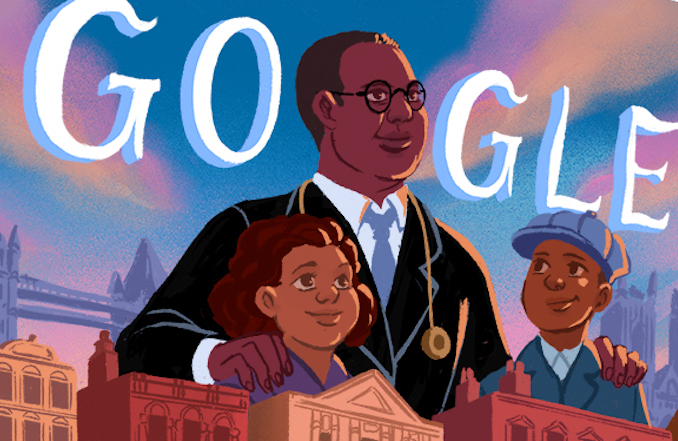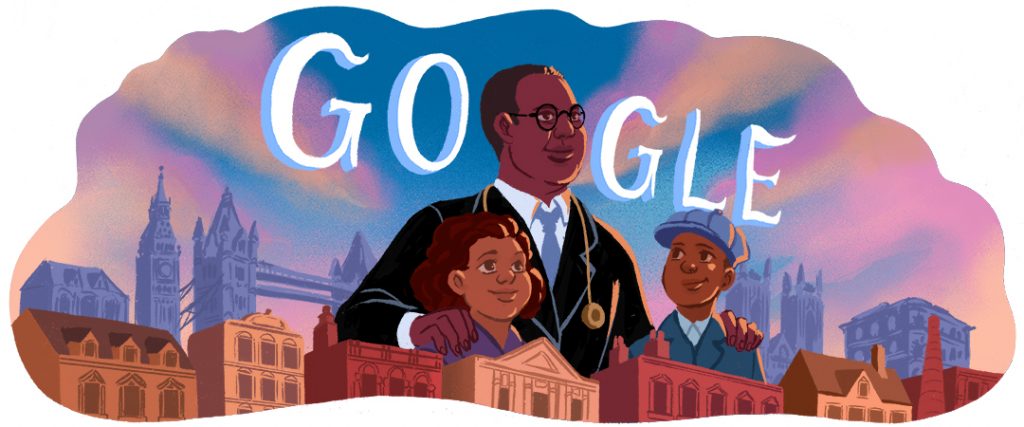
Google Doodles honored Dr. Harold Moody, a British doctor and civil rights pioneer who was born in Jamaica, with a “doodle” celebrating his life and accomplishments. He was born in 1882 in Kingston and learned about medicine and the medical industry at a young age. While in secondary school, he worked in the pharmaceutical business operated by his father. He graduated from Wolmer’s School in 1904 and went to the United Kingdom at the age of 23 to receive a medical education at King’s College in London on September 1, 1904. He finished his course of study at King’s in 1910 at the top of his class.
Despite having qualified as a medical doctor and having received the highest of honors during his training, he was prohibited from working in his chosen field due to the British “color bar system,” which denied opportunities for individuals on the basis of their race. Dr. Moody did not let the color bar stop him from practicing medicine as he was trained to do, however, and he opened a private medical practice in Peckham in South East London. As a result of his experiences with racism in the UK, he formed the first civil rights movement in that country, the League of Colored Peoples, in 1931. He served as its president until 1947.

The organization’s mission was to battle racial injustice and inequality throughout the UK and the world. It was instrumental in making changes to legislation that furthered the push for equality at the government level. In 1943, Dr. Moody received an appointment to a government advisory committee addressing the welfare of non-Europeans. Also in 1943, he became chair of the London Missionary Society.
Dr. Moody also fought racial prejudice in the armed forces and succeeded in getting the Special Restriction Order of 1925, also known as the Colored Seamen’s Act, overturned. He also organized his local community during World War II. In 1944, he was the first physician on the scene of a particularly bad bombing of the neighborhood and saved many lives at the time.
The Google Doodle, created by the Dublin, Ireland, artist Charlot Kristensen, depicts two children in reference to Dr. Moody’s service to disadvantaged children and his dedication to helping people from impoverished backgrounds by providing them with free health care services.
Steven Golding, the president of the Universal Negro Improvement Association in Jamaica (UNIA), said it was “phenomenal” that Google would choose such an “undeniably Jamaican” person to highlight with one of its signature doodles. He went on to say that the social and political activities of Dr. Moody on behalf of people of color helped to focus on Jamaicans as “a people who stand up against injustice, who are known to make our voices heard and known to be amongst the cadre of leadership when it comes to organizing in defense of human rights, civil rights, and against discrimination.”
While many Jamaicans may not be aware of Dr. Moody, a contemporary of Jamaican National Hero Marcus Garvey, he remains an example of the contributions Jamaica has made to the UK. According to Golding, Jamaicans have had to fight to get Jamaicans added to the pages of black history in educational curricula in both Jamaica and the UK, which tend to ignore people like Dr. Moody and Mary Seacole.
Dr. Moody married Olive Mable Tranter, a coworker at the Royal Eye Hospital in London, and they had six children. Their son Charles Arundel Moody became just the second black commissioned officer in the British Army in 1940. He ultimately attained the rank of colonel. Another son, Harold Moody, was a British shot-put athlete. Dr. Moody’s brother Ludlow also studied medicine at King’s College and received the Huxley Prize in physiology. Another brother, Ronald Moody, became a sculptor.
In 1947, Dr. Moody died at home in Peckham at age 64 after making a speaking tour of the United States.
Photo – Google Doodle







